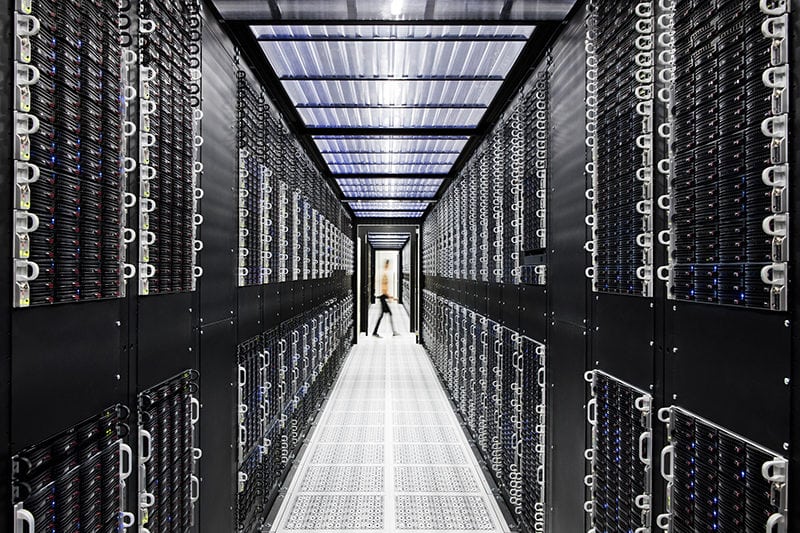
Inside an IBM Cloud Data Center. Photo: Connie Zhou for IBM
The world is a colorful place, filled with different countries, cultures, cuisines, and languages. But in this day and age, there is something new that we all share in common. We are all united by our incessant desire to be connected, preferably all the time. Being in a remote, or rural location makes no difference. Anywhere on this planet, and even up in the sky for that matter, we want connectivity. And any company that wants to best serve its customers' needs to understand and meet this burning demand. Connectivity is for the people.
Appreciating this and wanting to win over new business was behind IBM Cloud's decision to partner with SES Networks. Through the IBM Cloud Direct Link Service Provider Program, SES Networks is enabling high-performance, fiber-like connectivity to IBM Cloud customers globally. Now, thanks to SES Network's satellite-based connectivity delivered by the O3b Medium Earth Orbit (MEO) satellite network, customers anywhere in the world can access IBM Cloud and avail an improved digital experience in verticals spanning government, global telecommunications, maritime, aerospace, and energy markets with remote or mobile end points.
"We live in a society that is more globally connected than ever before, and the demand for interconnectivity from remote locations, for example from cruise ships to military vessels to vehicles, continues to grow. Additionally, having dedicated connectivity between remote locations and the cloud is critical as more and more companies turn to the cloud to build and run their most important applications," said IBM Cloud Offering Manager Paul Hertzfeldt.
"Satellite can help alleviate some of the key connectivity challenges of operating in remote locations. By collaborating with SES Networks through the IBM Cloud Direct Link Service Provider Program, we are continuing to deliver on our goal of helping enterprises adopt cloud seamlessly and securely," added Hertzfeldt.
With the collaboration with SES Networks, IBM is now well positioned to capitalize on the increasing cloud adoption that is taking place all over the world. IBM is now ensured that applications and solutions can be deployed on the IBM Cloud to markets that are currently void of adequate connectivity due to either unreliable, or non-existent terrestrial networks.
"From an industry perspective, we see opportunity for the collaboration between IBM Cloud and SES Networks to continue to help address the needs of customers in the energy and government sectors, as these often require connectivity from remote location," said Hertzfeldt.
At present, many customers are still in the early phases of their cloud journey, meaning they will require a secure, hybrid, and open approach to the cloud as they enter the next phase. This is where the IBM Cloud Direct Link Service Provider Program comes in. It allows enterprises to select from a robust ecosystem of local and global connectivity providers so they can create the private connections to IBM Cloud that best suit their needs.
"We're continuing to see growth and interest from providers in joining the program, and collaborating with SES Networks provided a great opportunity to help solve some of the challenges that clients face when connecting from very remote locations," noted Hertzfeldt.
The MEO Solution for the Last Mile
In order to move forward with its cloud strategy to help clients seamlessly and securely manage their data and workloads across public, private and on-premises environments, IBM needed to solve connectivity challenges related to the last mile to remote locations. Here, the O3b constellation not only solved this but also afforded IBM assurance of performance. O3b broadband solutions are Managed Extensibility Framework (MEF) Carrier Ethernet (CE) 2.0 certified, meaning that they're recognized as being able to offer MEF-compliant service level agreements for key attributes including latency, jitter, and throughput.
With the ubiquity of high-capacity, low-latency satellite connectivity coupled with IBM Cloud's global data center footprint and services, customers will be able to build and run a range of applications and use cases including low-latency cloud services, optimized Internet of Things (IOT) and Artificial Intelligence (AI) solutions, dedicated private or remote connectivity, rapid deployment of connectivity services, and continuous emergency preparedness strategies.
